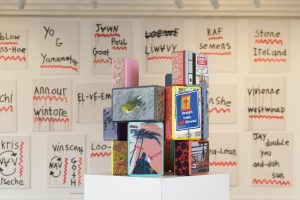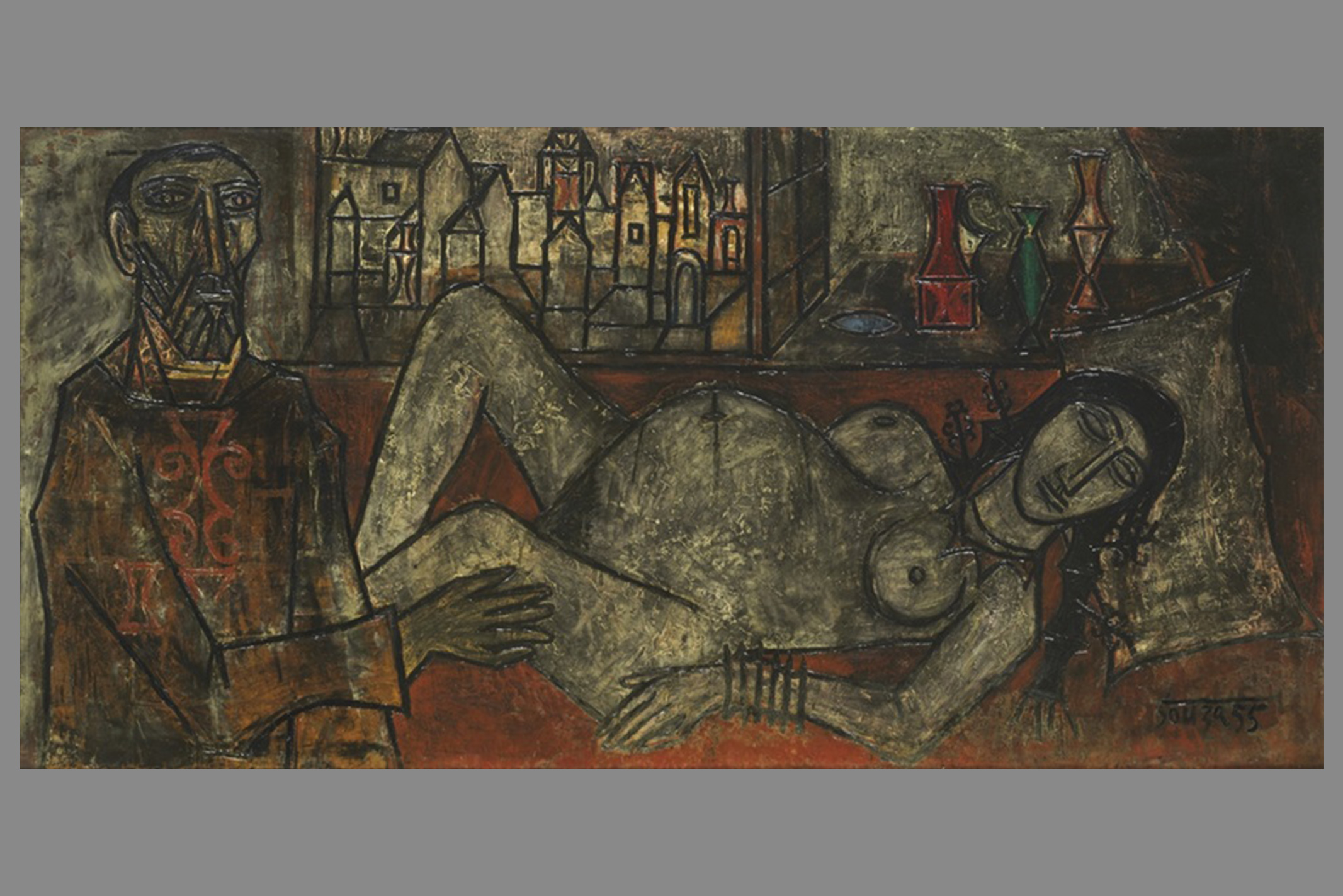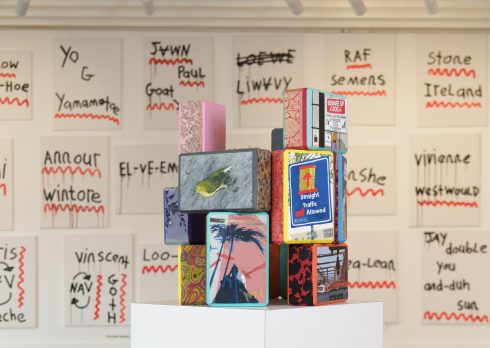The 20+ Crore Club – Highest Auctioned Indian Artists Of All Time
Over the past decades, art has not only been an asset worth investment but also an interpretative visual that very few managed to decode. This imagery has expanded horizons from well-known museum collections to esteemed private legacies. The last ten years witnessed some of the major groundbreaking auction-able pieces that have pushed the envelope of Indian art on the world art map. These jaw dropping records have introduced movement and dynamism to the Indian art scene as we wait to witness the next high go under the hammer. In celebration of these modernists’ highs, we look back at the top 7 highest auctioned artists in the history of Indian art.
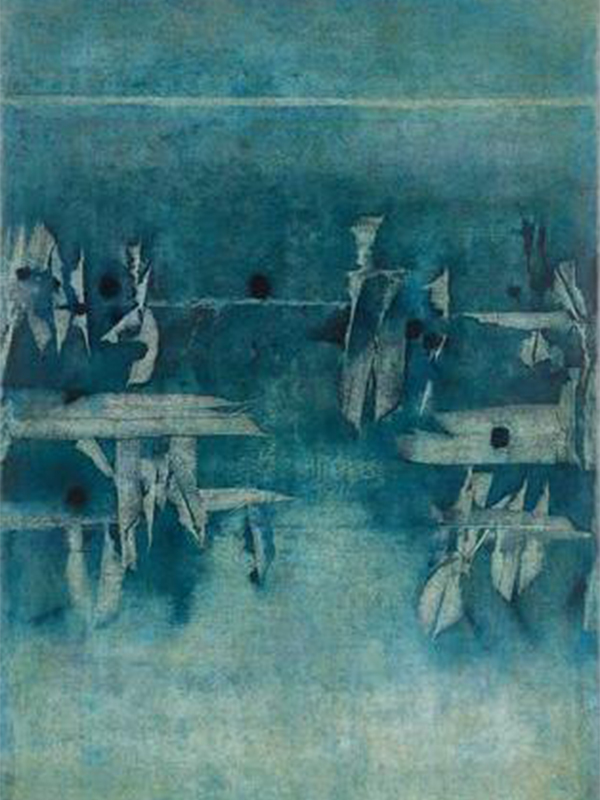
Signed and dated ‘GAITONDE 69’ and signed and dated in Devanagari on reverse, Image courtesy of Pundole’s
1. Vasudev S. Gaitonde – Untitled, 1969
A classic Gaitonde made a record-breaking sale at the recently commenced Pundole’s auction in February this year. Sold at INR 42 crore1, this piece marks the newest high achieved in India so far. Provenanced from Glenberra’s legacy, this coveted lot marks a crucial period in Gaitonde’s career, from the 1960s. The artist’s discovery of Zen Buddhism in 1959 marks his major breakthrough, as he shifted from figuration to sonorous abstraction. A first timer in the auction market, this monumental work represents the drama, the crescendos and the innate pauses in Gaitonde’s art. Ranjit Hoskote eloquently compared this painting to the central raga in Indian music, in the catalogue essay titled ‘The Sonority of Gaitonde’s Paintings’.
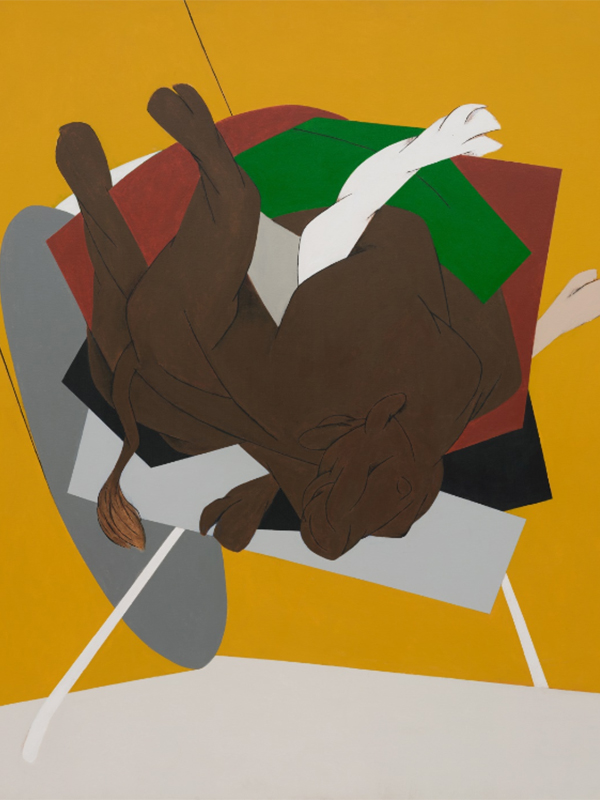
Signed and dated ‘Tyeb 99’ (on the reverse), Image courtesy of SaffronArt
2. Tyeb Mehta – Untitled – Bull on Rickshaw, 1999
The second highest lot is attributed to the SaffronArt Spring sale in April 2022, with a record breaking value at INR 41.97 crore2. Mehta’s bull conveys a sense of disquieting torment and discomforting trauma hidden beneath his strikingly formal geometric arrangement and colour blocking composition. Previously auctioned at the Christie’s in 2014, this magnum opus represents the coming together of a medley of icons that embody his celebrated oeuvre – trussed bull, disoriented features, falling figure and rickshaw. “The rickshaw becomes a metaphor for ‘bondage and the slave’ rather than ‘a simple means of transport’.” (Nissim Ezekiel, Tyeb Mehta, New Delhi: Kunika Chemould Art Centre, 1970).
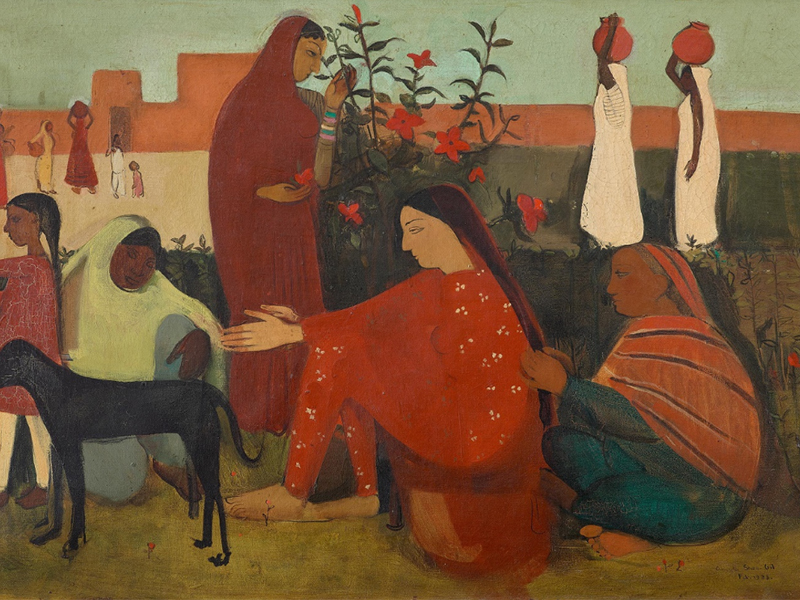
Signed and dated ‘Amrita Sher Gil/ Feb. 1938’ (lower right), Image courtesy of SaffronArt
3. Amrita Sher-Gil – In the Ladies’ Enclosure, 1938
The Indo-Hungarian artist, Amrita Sher-Gil is the only leading female artist, whose work fetched INR 37.80 crore3 at the Modern Indian Art auction at the SaffronArt in July 2021. This remarkably aesthetic piece blends European and Indian style as she depicts experiences of 20th century Indian women. This particular artwork is testament to the shift in Amrita’s oeuvre in the 1930s, when she started developing a certain “Indianness” in her visual lexicon. Painted in Saraya, this seminal work introduces a certain balance in the warm reds and cool greens, with a direct inspiration from the Rajput and Pahari miniatures. One of the last few works by the artist, this particularly holds a special significance for Amrita. In a letter to Khandalavala, dated 13 April 1938, Sher-Gil says: “I have been curiously happy the last few months, I don’t know why. These little compositions are the expression of my happiness and that is why perhaps I am particularly fond of them and will always have a tender spot in my heart for them, even when my calm vanishes and the little compositions along with them.” (Quoted in Sundaram, p. 483)
Also Read : From Chor Bazaar To Christie’s – The Art Of Identifying A True Antique From A Reproduction
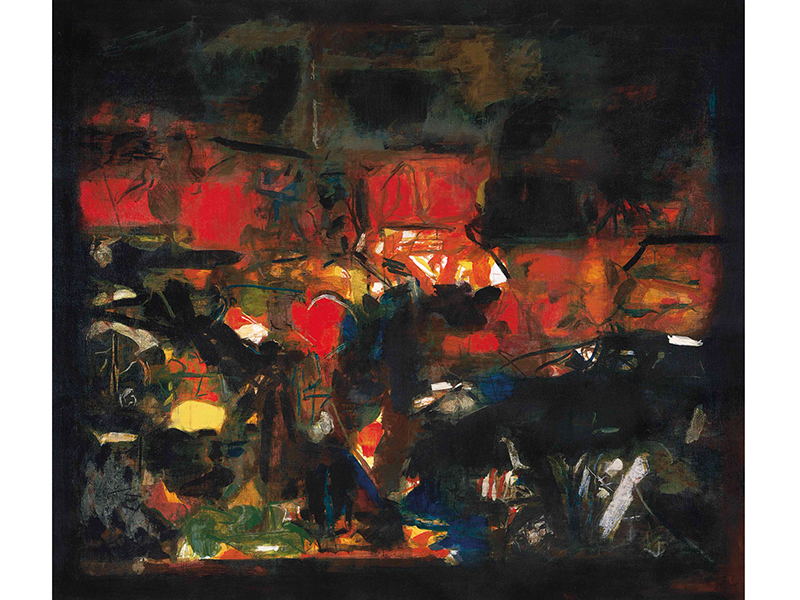
signed and dated ‘Raza ’72’ (lower right); further signed, dated, inscribed and titled ‘RAZA, Image courtesy of Christie’s
4. Syed Haider Raza – Tapovan, 1972
The 1972 abstract painting with hints of primary pigments against black was declared at the Christie’s South Asian Modern and Contemporary Art auction sold at INR 29.30 crore4 in March 2018. This unfathomable piece by S H Raza marks that period when the modernist painted seminal pieces such as Zamin (1971) and La Terre (1973). Tapovan, meaning forest meditation, sings odes of sensuousness of nature and nostalgic representation of the landscape from his childhood home. Flashes of vermillion, yellow, blue and green flicker across the surface, as if dancing through the undergrowth in the twilight. “I have never really left the deep rooted, wonderful world of forest and rambling river, hill and sparkling stream. The time spent as nature’s child. You see, we lived in the country’s core, in Barbaria, Madhya Pradesh, where my father was a forest ranger…” (Artist statement, Y. Dalmia, The Making of Modern Indian Art: The Progressives, New Delhi, 2001, pp. 156-157)
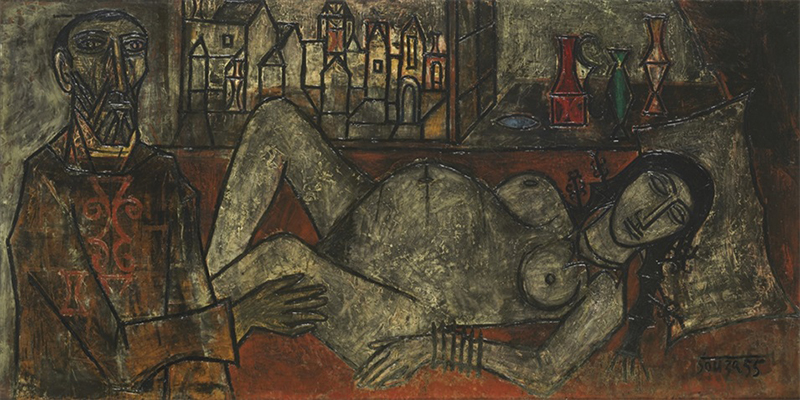
signed and dated ‘Souza 55’ (lower right); further signed, titled and dated ‘F. N. SOUZA / BIRTH – 1955’ and bearing The Arts Council of Great Britain exhibition label (on the reverse), Image courtesy of Christie’s
5. Francis Newton Souza – Birth, 1955
Painted in the 1950s, Birth by Souza marks a pivotal year in which the trajectory of his career was defined for the remainder of the century. Sold at a whooping INR 26.5 crore5 at the Christie’s in September 2015, this piece encompasses the Goan artist’s major subjects that have well defined his compositional traits – reclining nude with hairpins, the autobiographical man in a priest’s tunic, a still life on the window ledge and, beyond the window, a townscape with corniced buildings and tall steeples. This outstretched heavily pregnant woman depicts Souza’s signature style encompassing distorted lines and disoriented facial expressions. Birth is the manifestation of that moment when an Indian painter, once shunned for his depictions of nude women, alighted on the international stage at the highest level to speak simultaneously for two nations, the United Kingdom and India.
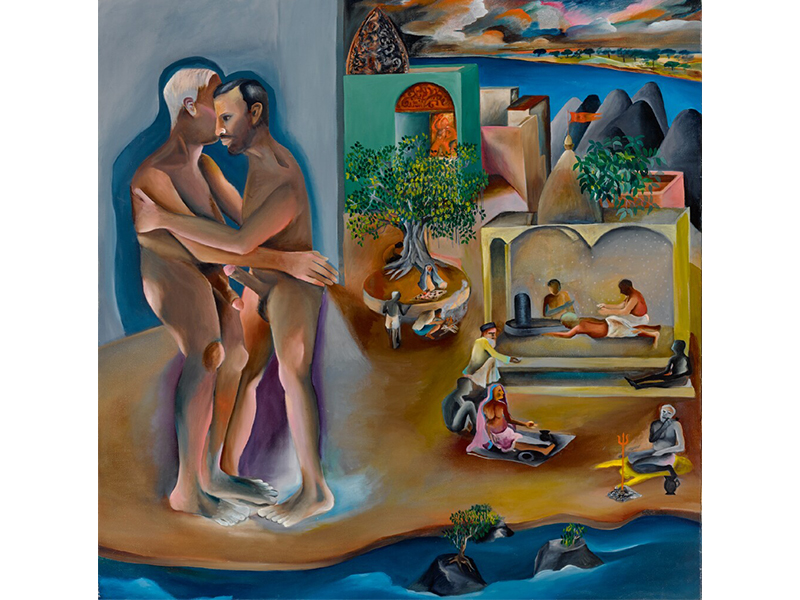
Signed and dated indistinctly in Gujarati lower right Bearing a TATE exhibition label on reverse along with another distressed label, Image courtesy of Sotheby’s
6. Bhupen Khakhar – Two Men in Benares, 1982
Two Men in Benares is amongst the three works that are unanimously considered the most important in Khakhar’s artistic career as he announced his homosexuality to the world. The artwork encourages the viewers to interpret experiences of homosexuals in India. Hammered at INR 22.5 crore6 at the Sotheby’s in June 2019, this powerful and complex imagery depicts two men with erected phallus pleasuring themselves while completely cut off from the surrounding conventional routines in the ghats of Benares. “Two Men in Benares was painted when I thought I needed courage. All the time I sought courage. I think courage also had to do with my later work—during my illness—Blind Babubhai, Bullet Shot in the Stomach, Beauty is Skin Deep.” (Interview by Amit Ambalal with Bhupen Khakhar, ‘God, Truth and Coca Cola,’ Bhupen Khakhar: A Retrospective, NGMA and The Fine Art Resource, 2003, p. 114)
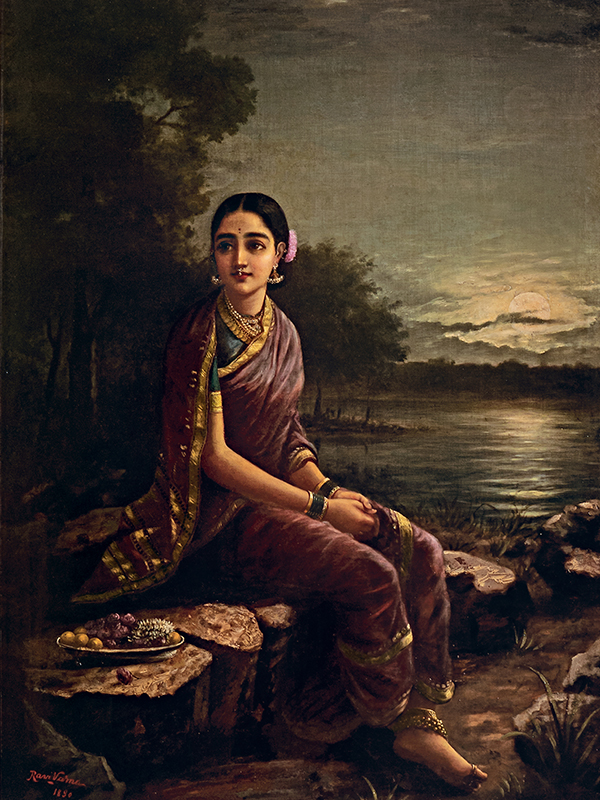
Signed and dated ‘Ravi Varma / 1890’ lower left, Image courtesy of Pundoles
7. Raja Ravi Verma – Radha in the Moonlight, 1890
Painted with extra care and refinement, Raja Ravi Verma’s Radha embodies epitome of beauty, grace and intelligence as the uttama nayika or high-minded women of many virtues is set against the timeless backdrop of a full moon light. Sold at INR 20.007 crore at the Pundole’s Fine Art auction in November 2016, Verma’s mythological and lively imagination now rests within Mrs. Kiran Nadar’s esteemed private collection. The painting was conceived during Ravi Verma’s tenure as the Dewan of Travancore in the 1880s. Ravi Verma recognised the nuance of Radha’s unconditional love, making Krishna yearn for her. Similarly, this great anticipation of love making under the moonlight stirs the heart of many aesthetes.
These jaw dropping values have chronicled a vibrant legacy of the Indian arts. The modernists have set some major records and their seminal pieces mark important events of their artistic careers. While we revisit the top 7 highest auction artists, we can’t wait to see the history in making. The art market awaits for the next magnum opus to break the glass ceiling and mark a new record on the world art map!
Bibliography:
1Glenberra: A Lasting Legacy – lot 13 – Vasudev Gaitonde. Pundoles. (2022, February 24). Retrieved September 29, 2022, from here
2Spring Live Auction: Modern indian art – lot 46 -Tyeb Mehta. Saffronart. (2022, April 6). Retrieved September 29, 2022, from here
3Summer live auction – lot 13 – Amrita Sher-Gil. Saffronart. (2021, July 13). Retrieved September 29, 2022, from here
4South Asian Modern and Contemporary Art – lot 222 – Syed Haider Raza. Christie’s. (2018, March 21). Retrieved October 4, 2022, from here
5South Asian Modern and Contemporary Art – lot 709 – Francis Newton Souza. Christie’s. (2015, September 17). Retrieved October 4, 2022, from here
6Coups de Coeur: The Guy and Helen Barbier Family Collection – lot 12 – Bhuppen Khakhar. Sotheby’s. (2019, June 10). Retrieved September 29, 2022, from here
7The Fine Art Sale – lot 12 – Raja Ravi Verma . Pundoles. (2016, November 17). Retrieved September 29, 2022, from here













